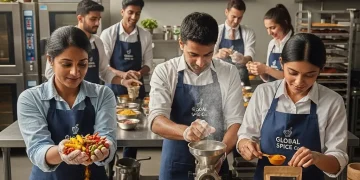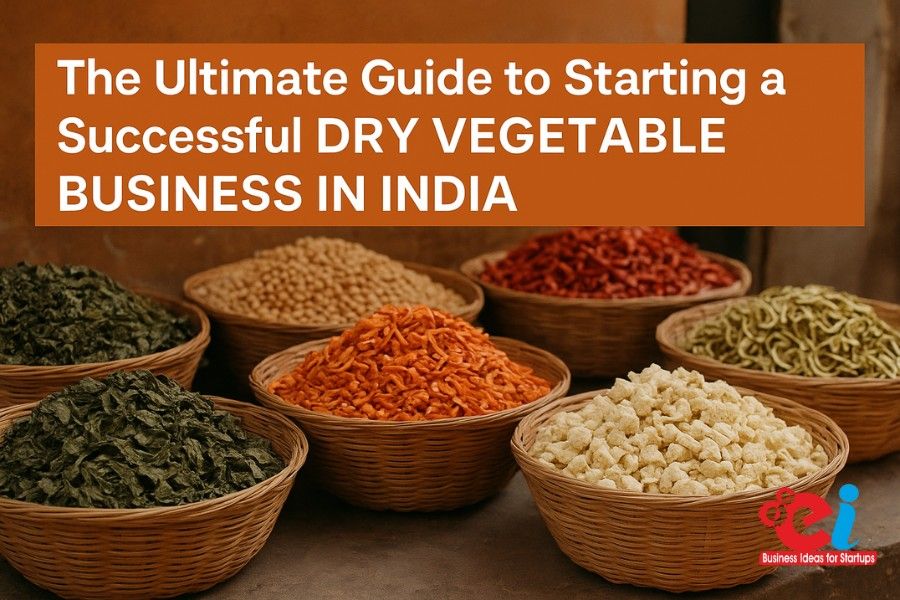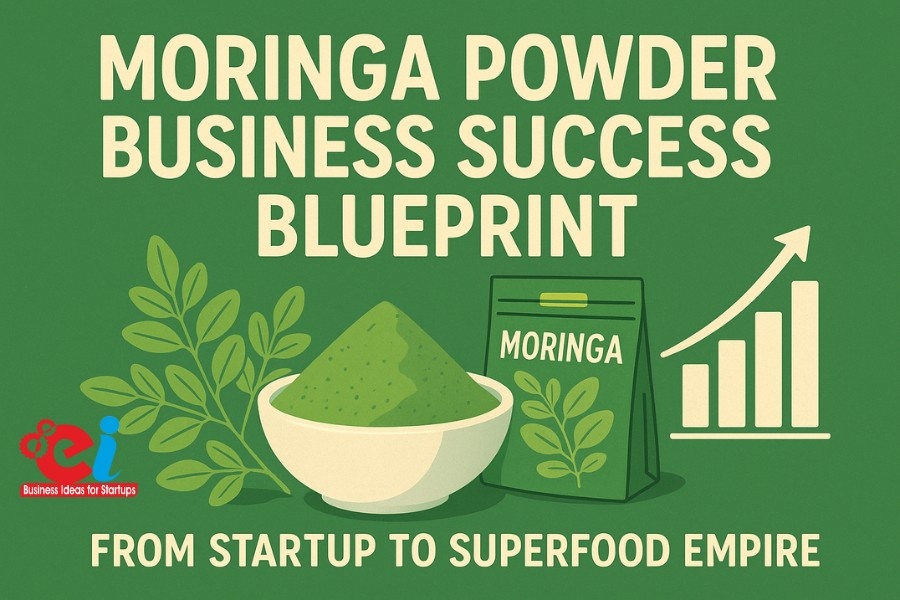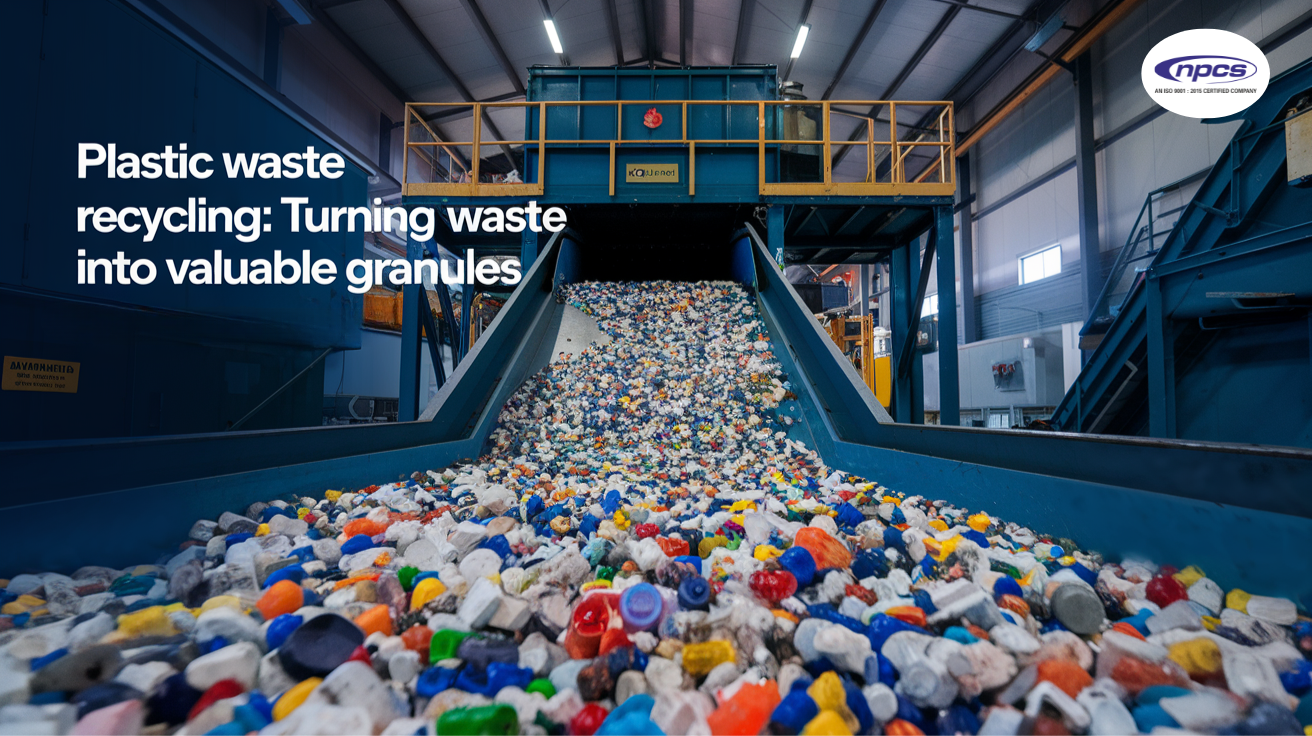Spice Processing Business: Indian superpower status maintained with spices exports of ₹1,250 billion, of which over 15 million tonnes were chillies, turmeric, cumin, cardamom, pepper, celery, etc.
It is rather odd that since most exports are still almost raw or raw, the real opportunties would lie in oleoresins, extracts, fortified mixes, niche value added products, and functional spice derivatives which could greatly reduce import expenditure and provide plenty of export revenue.
After the market has been tested, the article illustrates that start-ups will be able to access these opportunities. After assessing feasibility, and fine-tuning the successful MSME models, the recipes of the emerging models are positioned to capture this value.
Indian Spices Surplus at a Glance
It is claimed that in the financial year 2023-24, Indian spices worth ₹1.25 trillion were exported exceeding 15 million tonnes. Exports include chilli, turmeric, cumin, cardamom, celery and pepper.
Additionally, oleoresins, essential oils and blended products have never been fully integrated towards utilization, as the report by NLSTP suggests. In the initial stages, abundant raw materials and a small number of high-value products intended for the export market would be sufficient given the spice surplus in India.
Why Value Added is the Next Frontier?
A value-added product earns between 25 and 40 percent profit margin profit margins whereas value-added whole spices earn between 5 and 10 percent profit margins. These products are in demand because they are part of clean label and functional foods which are sold at a premium.
There is a great potential for local producers to work in joint ventures with the importation of high quality essential oils and specially formulated oleoresin raw materials.
MoFPI, MSME, and APEDA Scholarship schemes are providing pre-start-up assistance in the form of capital grants, technology upgrades, market entry, export assistance and other start-up subsidies.
Key Niche Opportunities for Value Added Products
Oleoresin
Oleoresins satisfy the commercial requirements of food, beverage, and nutraceutical industries as they contain the essence, aroma, and color of spices.
Entrepreneurs are able to easily APEDA advantages because they can install production units near the central areas of spice cultivation.
Some of the oleoresins of the colour value class are still oleoresins the country imports. This in turn would give the Indian companies a terrific opportunity to pursue these markets.
Read Our Book: Click Here
Distillation of Essential Oils from Cardamom, Clove and Celery
The distillation of essences of cardamom, clove, and of celery for cellery, cardamom, clove and celery for flavouring agents, perfumery, and the pharmaceutical industry is already accomplished.
The parent MSME would enable the constituent start up to identify and create proprietary unique blends. This would remove the dependence of the FMCG on foreign imports of essential oils.
Read More: Building High-Value Spice Processing MSMEs
Encapsulation of Spice Flavours
These are powerful dry powdered concentrates of liquid spice extracts with long shelf life designed for instant mixable convenience to food products. Spice flavouring technology is available through start-ups, in addition to other sponsorships for the sale of infused snacks and beverages.
Fortified and Specialty Spice Blends
These blends of seasoning are ready to use and are fortified with some form of vitamin D or potassium salt substitute. They would appeal to health conscious consumers, especially those who use boom products.
Innovation grants issued to micro, small and medium enterprises integrated with blending and packaging of spices will somehow reduce costs and increase scope for earning ‘Innovation Grants’.
Organic Gourmet Spice Kits
The demand for organic gourmet products is high and Start-ups need to collaborate with farmers for organic certification and a premium retail brand position for new high end packaging. Gourmet blend imports will be happily replaced by these products.
What NPCS Can Do for You
Niiir Project Consultancy Services (NPCS) removes spice raw export possibilities for entrepreneurs and provides more competitive solutions for the spice products within the country.
Niir NPCS Market Survey Cum Detailed Project Reports offer Demand and Supply Balanced Reports by forecasting the market, financing, assembling raw materials, and machinery within manufacturing.
MSME Success Stories & Business Models
The spice processing MSME sector is one of the few domains within India which is thriving with innovative business models.
Rajasthan Organic Producers secures a leading position for fortified organic spice blends in Europe.
The MoFPI supported exports have helped The Kerala Oleoresin Company to grow from a small scale processor to a global supplier.
The spice blending project received assistance in automation under the MSME scheme, thanks to the workspace automation with raw materials provided by Gap as a supplier.
Rajasthan Organic Producers has significant market share for fortified organic spice blends in Europe.
The Action Blueprint For New Entrepreneurs
Approach a private label contract manufacturer, apply for government funding to purchase automated machinery, procure raw materials from the FPOs, and market your branded exports.
Read More: Emerging Global Markets for Indian Spices, Dairy, and Processed Foods
Government Resources
- mofpi.gov.in – Schemes under PMKSY and Mega Food Parks.
- msme.gov.in – Technology and cluster development.
- apeda.gov.in – Provides facilitation and export certification.
Read Our Project Report: Click Here
Import & Export- Oriented Strategy with Sectoral Insights
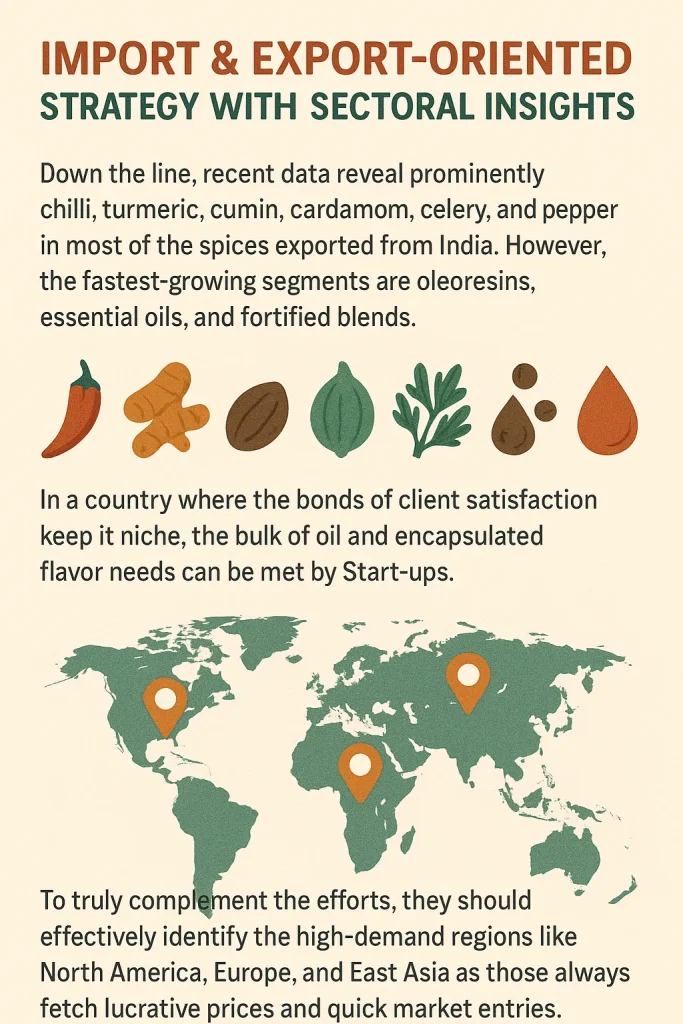
Down the line, recent data reveal prominently chilli, turmeric, cumin, cardamom, celery, and pepper in most of the spices exported from India. However, the fastest-growing segments are oleoresins, essential oils, and fortified blends.
In a country where the bonds of client satisfaction keep it niche, the bulk of oil and encapsulated flavor needs can be met by Start-ups.
To truly complement the efforts, they should effectively identify the high-demand regions like North America, Europe, and East Asia as those always fetch lucrative prices and quick market entries.
Spice Processing Business: Initial Action Plan
- Feasibility Study: Collaborate with NPCS to develop a growth and market potential strategy.
- Funds for Certifications: Obtain FSSAI, HACCP, IndGAP, and Organic certification for certification credibility.
- Build Supply chains: Work with the FPOs for better quality and traceability.
- Market Strategically: Trade fairs, E-commerce and B2B networking will enable access to foreign buyers.
Spice Processing Business: Future Trends – Next Waves of Growth
A burgeoning avenue of growth is functional fortification which combines herbal or probiotic constituents with the extract of spices.
- Green Processing: Processing with no waste and application of thermally low power processing.
- Digital Traceability: Blockchain and QR for traceability is marvelous.
The spices with the highest margin will be sold on international e-commerce.
Find the Best Idea for Yourself With our Startup Selector Tool
Spice Processing Business: Conclusion
The Indian spice export industry which is more than 1.25 trillion rupees overshadows bulk commerce. Start up can try to convert the surplus in spices into high margin niche products for export substitution and world class branding.
With value addition from NPCS and government backing, and with clear vision, India can turn the legacy into self-sufficient industry losing much of what she could otherwise learn from her imports and exports which offer sound business models.
Spice Processing Business: FAQs
Why should startups engage in value addition activities in spice products?
Spices have relatively high profit margins on products and there is an increasing appetite for them. Furthermore, there are many government sponsored incentive programs for new businesses in this industry.
Which value added product adds the most scope for opportunity?
Oils and oleoresins, spice kits, blended organic fortified spices, organic spice blends and other value added spices.
How can a startup spice processor raise finance for their business?
There is funding available from the MoFPI, MSME and APEDA, along with other government grants which are accessible from other private funding institutions.
What are the primary certificates required for exports?
The most dominant certificates, as a minimum, comprise the FSSAI, HACCP, IndGAP, ISO and organic certificates.
What role will NPCS play in assisting the entrepreneurs?
Among other things, NPCS will do the venture project evaluation, construct a financial model, and facilitate the entrepreneurs in accessing government support. Also, NPCS will assist in selling profitable niche products and government subsidized offers.
